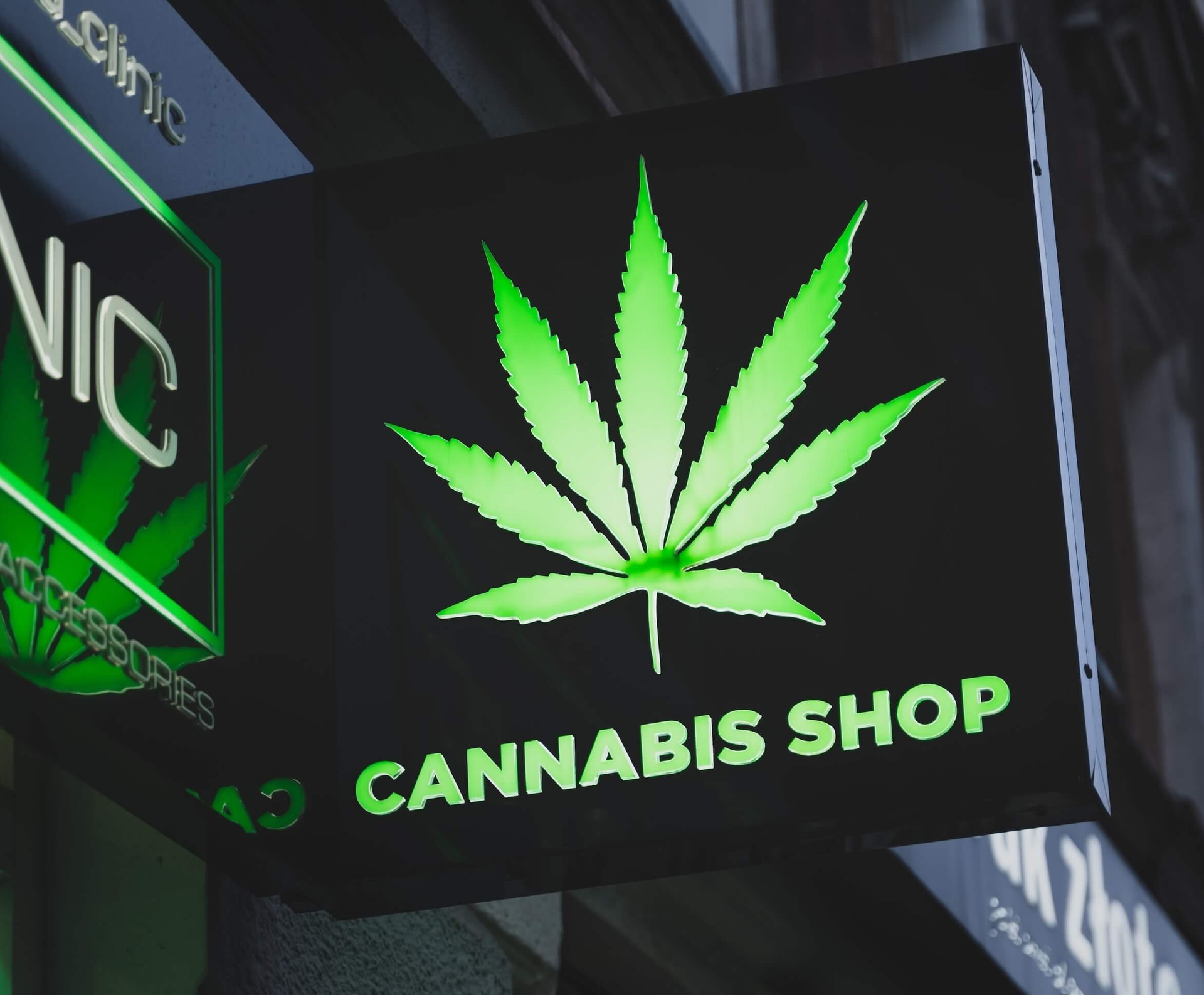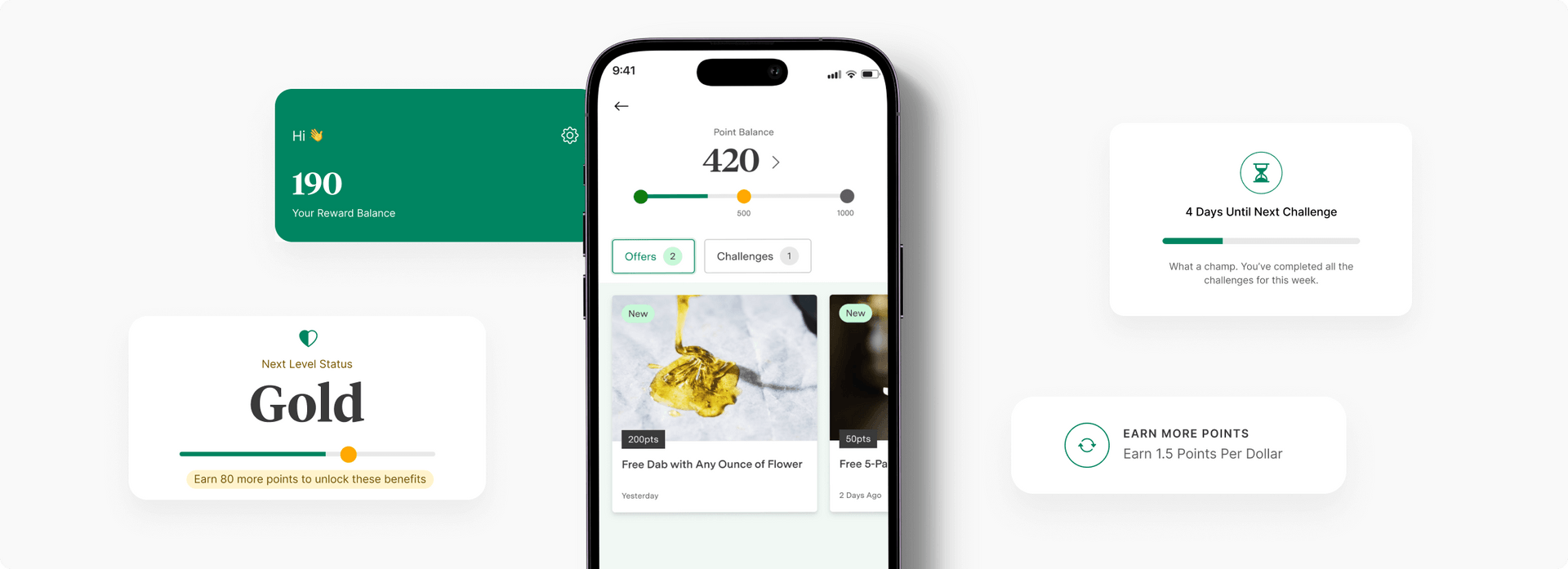Recapture Website and Cart Abandonments With These Cannabis Retail Online Ordering Strategies

In the world of cannabis online ordering, data sets are often disjointed.
While your loyalty data may be on one platform, your point-of-sale data could be on another, and your menu and payment processing may also be separated from one another.
When comprehensive sales data doesn’t tie together nicely–it can be difficult to make true insights about your customers, and that means missed sales opportunities.
One of those frequently missed opportunities is the ability to recapture cart and site abandonments.
What Are Website Abandonments and Cart Abandonments?
First, let’s take a moment to define the two different types of abandonments in online retail.
Website abandonment occurs when a visitor exits a website without taking any desired action or engaging further. It can refer to visitors who leave right after arriving on the site or those who navigate through multiple pages but ultimately exit without making a purchase.
People abandon websites for reasons like slow loading times, irrelevant content, poor user experience, or failure to find what they were looking for.
Cart abandonment refers to a customer adding products to their online shopping cart but exiting the website or app without completing the purchase. In other words, they abandon their cart before proceeding to the checkout and finalizing the transaction.
Cart abandonment is an issue every online retailer faces, and can happen for various reasons including unexpected costs, complex checkout process, distractions, or simply a change of mind. According to Zippia, nearly 70% of carts are abandoned–adding up to $18 billion in lost sales each year.
How Can Companies Reduce Abandoned Carts?
Before we talk about how to recapture abandoned carts, it’s important to talk about how to reduce abandoned carts in the first place.
Here are some ways that companies keep their users on page and encourage them to check out within their initial website session:
-
- Simplify the Checkout ProcessStreamlining the checkout process reduces friction and encourages customers to convert to purchasing. Reducing the number of steps required, removing unnecessary form fields, offering guest checkout options, and providing clear progress indicators are all ways to simplify shopping for customers.
- Optimize Website PerformanceSlow loading times and technical glitches can frustrate users and prompt them to abandon their carts. Improving website performance, including page loading speed and responsiveness across devices, creates a smooth and efficient browsing and shopping experience. To do this, companies will invest in optimizing their websites–leveraging caching techniques, content delivery networks (CDNs), and code optimizations to provide a fast and reliable user experience.
- Display Clear Shipping and Pricing Information Unexpected costs, such as high shipping fees or additional charges during checkout, are common reasons for cart abandonment. Companies should prominently display shipping costs, return policies, and any additional fees early in the shopping process to mitigate abandonment. Providing transparency about pricing and offering incentives like free shipping or discounts for reaching a certain cart value can help alleviate concerns and motivate customers to complete their purchases.
- Enable Guest Checkout and Account CreationSome customers may be deterred by the requirement to create an account to complete a purchase–especially in the cannabis industry where there are often greater privacy concerns. Offering guest checkout options eliminates this barrier and allows customers to proceed with their purchase quickly. However, it’s also essential to provide the option for customers to create an account after the purchase if they wish to for convenience or loyalty benefits.
How Are Abandonments Recaptured?
Effective abandonment recapture in more established industries often involves personalized communication with customers, such as:
Abandoned Cart Email Reminders
Automated email campaigns specifically designed for abandoned cart recovery are very effective in reminding customers about their abandoned items.
Emails are sent to customers soon after they have left the website without completing their purchase.
The emails typically include a personalized message, a summary of the abandoned items, and a clear call-to-action encouraging the customer to return and complete the purchase.
Some companies also include incentives such as discounts or free shipping in these emails to entice customers back to their carts.
Follow-Up Email Series
In addition to the initial abandoned cart email, companies often implement a series of follow-up emails to further encourage customers to return.
These emails can be strategically timed and designed to provide additional value, address concerns, offer customer support, or highlight the benefits of the products.
The goal is to nurture the relationship with the customer and build trust, which will increase the likelihood of a successful recovery.
Average open rates of abandoned cart emails is quite high (around 45%), and the conversion rate of those emails is over 10%, Zapier reports.
Exclusive Offers and Discounts
To persuade those who abandoned their carts to return and complete their purchase, companies often provide exclusive offers or discounts through retargeting ads and emails.
These incentives could be limited-time discounts, free shipping, or bundled deals.
Making the offer appealing and time-sensitive creates a sense of urgency and incentivizes customers to act quickly and complete their purchases.
Social Proof and Customer Reviews
Including social proof elements such as customer reviews, testimonials, or ratings in retargeting ads and emails can help instill confidence and address potential hesitations.
Sharing positive feedback from other customers who have purchased the same or similar products reassures the buyer and encourages them to reconsider their abandoned cart.
However, in a fragmented technology landscape, like cannabis, consolidating the personalized data necessary for cart and website abandonment is a struggle for dispensaries. Customer profiles are separated within different platforms, making it difficult to create accurate, personalized, and automated follow-up messages. If dispensaries aren’t able to make those connections, those sales opportunities could be lost for good.
Mosaic Is Cannabis Retailers’ All-in-One Solution
Mosaic helps dispensaries enhance the way customers shop for cannabis. We do this by:
- Providing an improved customer experience through a mobile-first design and branded app & eCommerce
- Better showcasing your menu with enhanced product descriptions + video
- Integrating data-driven loyalty and CRM marketing into the the shopping experience
- Driving personalized experiences by leveraging your customer data and analytics
- Increasing average order value with seamlessly integrated payments
Mosaic’s software makes it easy for dispensary owners and managers to track and reach out to customers who abandoned their carts.
With our user-friendly interface, you can send personalized emails and push notifications to remind customers about their abandoned items.
Our software also offers features like guest accounts, branded interfaces, and clear call-to-actions to enhance the customer experience. Plus, you can manage customer relationships, loyalty programs, and sales all in one place.
Mosaic helps you build stronger connections with customers and boost your dispensary’s revenues.
If you want to elevate your online shopping experience to match the professionalism and sophistication of your physical store, schedule a free demo with Mosaic today!






